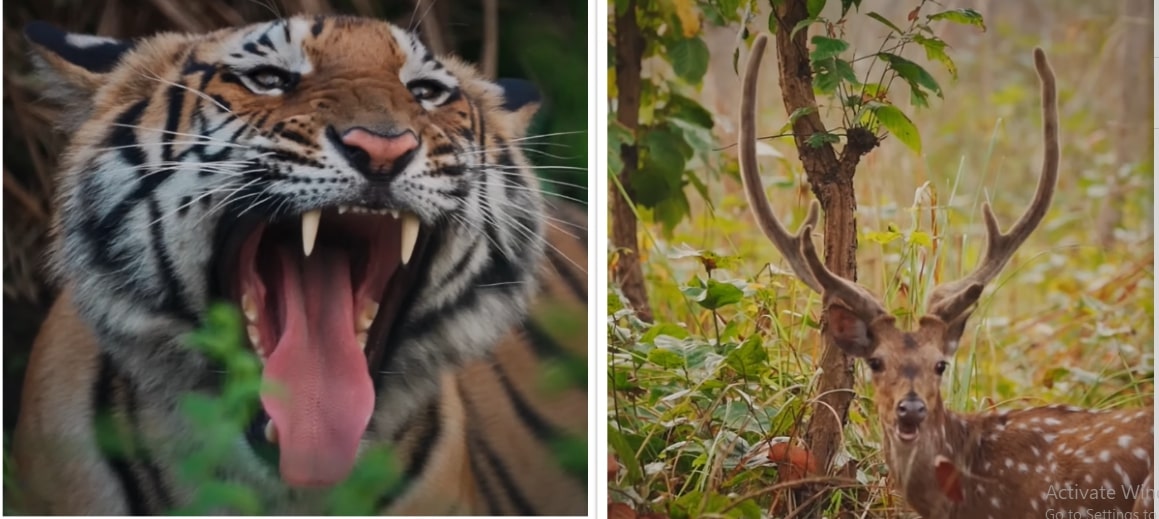
Wildlife of Nepal
Wildlife of Nepal: Nepal is a landlocked nation in South Asia, famous for both its breathtaking natural beauty and its extensive cultural history. Nepal, despite its relatively small size in comparison to the rest of the world (occupying about 0.1 percent of the Earth’s surface).
It is home to a surprisingly large proportion of the world’s plant and animal species. Specifically, it harbors 3.2 percent of the world’s flora (plant life) and 1.1 percent of the world’s overall fauna (animal life).

This highlights Nepal’s importance as a location for biodiversity conservation and preservation efforts. Furthermore, it suggests that the country’s unique geography and ecosystems allow it to support a wide range of plant and animal species, many of which are not found anywhere else in the globe.
At the same time, it underscores the need to protect and preserve natural habitats and ecosystems in Nepal. And to address threats such as habitat destruction, climate change, and poaching. It can endanger these precious species.
Land animals
Nepal is home to a diverse range of land animals, including both native and introduced species. Some of the notable land animals found in Nepal are:
- Bengal tiger – Nepal is one of the best places to see these majestic creatures in the wild.
- One-horned rhinoceros – The Chitwan National Park in Nepal is one of the few places in the world. You can spot these critically endangered animals.
- Red panda – This cute and cuddly animal is native to the forests of Nepal and is a national symbol.
- Snow leopard – These elusive big cats are in the high-altitude regions of the Himalayas in Nepal.
- Asiatic elephant – Elephants are in the southern plains of Nepal.
- Himalayan black bear – This species is mostly in the Himalayan region of Nepal.
- Langur – Nepal has several species of these playful and intelligent monkeys.
- Musk deer – This small deer is in the Himalayan region of Nepal.
- Wild boar – These animals are in the forests all over Nepal.
- Pangolin – The pangolin is also found in Nepal. It is unfortunately one of the most trafficked animals in the world due to its scales being used in traditional medicine. The Indian pangolin is the only species in Nepal and is listed as endangered.
- Jackal – Jackals are common in the Terai region of Nepal.
There are many other land animals in Nepal, including various species of deer, antelope, mongoose, and wildcats.
Birds
Nepal is a birdwatcher’s paradise, with over 900 species of birds found in the country. Some of the notable birds found in Nepal are:
- Nepal’s national bird is the Himalayan Monal, a beautiful bird. It is available in the high-altitude regions of the Himalayas.
- Spiny Babbler – This unique bird is only in Nepal and is famous for its distinctive spiny feathers.
- Cheer Pheasant – Another pheasant species found in Nepal, known for its colorful plumage and distinctive call.
- White-throated Tit – A small and colorful bird found in the forests of Nepal.
- Rufous-necked Hornbill – This large bird with a distinctive bill is in the subtropical forests of Nepal.
- Blood Pheasant – This bird is famous for its bright red coloration and is in the high-altitude regions of the Himalayas.
- Kalij Pheasant – This pheasant species is in the foothills of the Himalayas in Nepal.
- Himalayan Griffon – This large bird of prey is in the high-altitude regions of the Himalayas.
- Black-necked Crane – This migratory bird is in the wetlands of Nepal during the winter season.
- Satyr Tragopan – A colorful and rare bird species found in the forests of Nepal.
Other notable bird species found in Nepal include eagles, vultures, owls, woodpeckers, thrushes, flycatchers, and warblers. Additionally, the country’s diverse topography and climate have contributed to the abundance of birdlife found in Nepal.
Aquatic animals
Nepal is a landlocked country with no access to the sea, but it is home to several freshwater rivers, lakes, and wetlands. It supports a variety of aquatic animals. Some of the notable aquatic animals found in Nepal are:
- Gharial – A critically endangered species of crocodile that is native to the rivers of Nepal.
- Mugger crocodile – Another species of crocodile in Nepal, which is also present in other parts of South Asia.
- Giant river turtle – This turtle species is in the rivers of Nepal and is endangered.
- Himalayan snow trout – A fish species found in the high-altitude rivers and lakes of Nepal.
- Catfish – Several species of catfish are in the rivers and streams of Nepal.
- Freshwater eel – This eel species is in the rivers and lakes of Nepal.
- Indian salmon – A fish species found in the rivers of Nepal. It is also popular as the Hilsa fish.
- Marsh mugger – A species of crocodile found in the wetlands and marshes of Nepal.
- Frog – Several species of frogs are in the freshwater bodies of Nepal.
- Water snake – Several species of non-venomous water snakes are in the rivers and streams of Nepal.
Other notable aquatic animals found in Nepal include different species of crabs, shrimps, and snails. In addition, the aquatic animals of Nepal are an important part of the country’s biodiversity. They provide important ecosystem services such as maintaining water quality and supporting fisheries.
Invertebrates
Nepal is home to a diverse range of invertebrate animals, including insects, spiders, mollusks, and crustaceans. Some of the notable invertebrates found in Nepal are:
- Rhinoceros beetle – A large and impressive beetle species found in the forests of Nepal.
- Hercules beetle – Another large and impressive beetle species found in the forests of Nepal.
- Tarantula – Several species of tarantulas are in the forests of Nepal.
- Asian giant hornet – A large and aggressive hornet species found in the forests of Nepal.
- Butterfly – Nepal is home to over 650 species of butterflies, including the rare Kaiser-i-Hind.
- Moth – Several species of moths are in the forests of Nepal. This includes the Atlas moth. It belongs to the world’s biggest moth species.
- Giant snail – A large snail species found in the forests of Nepal.
- Stick insects – Several species of stick insects are in the forests of Nepal.
- Millipede – Several species of millipedes are in the forests of Nepal.
- Grasshopper – Several species of grasshoppers are in the grasslands and forests of Nepal.
Other notable invertebrates found in Nepal include different species of spiders, crabs, snails, and crustaceans. These invertebrates are an important part of Nepal’s biodiversity and play important roles in the ecosystem, such as pollination and decomposition.
Vegetation
Nepal is a country with a diverse range of topography and climate. It has contributed to the wide range of vegetation found in the country. The vegetation in Nepal can be broadly categorized into the following types:
- Tropical and subtropical forests – These forests are in the lowland regions of Nepal. They have dense evergreen and deciduous forests. The dominant trees in these forests include Sal, Sissoo, and Teak.
- Temperate forests – These forests are in the mid-hills regions of Nepal. They have broadleaf trees such as oak, maple, and rhododendron.
- Alpine and subalpine vegetation – These vegetation types are in the high-altitude regions of Nepal. They have grasslands, shrubs, and dwarf trees such as Junipers and Rhododendrons.
- Montane forests – These forests are found in the transition zone between the temperate and subalpine regions and are characterized by mixed broadleaf and coniferous trees such as Pine, Spruce, and Fir.
- Grasslands and wetlands – These vegetation types are in the lowland regions and have grasslands, marshes, and swamps.
Flowering plants vegetations
Many flowering plants in Nepal are endemic to the country or found only in the Himalayan region. Some of the notable unique flowers found in Nepal are:
- The Himalayan blue poppy is one of the most famous flowers in Nepal. It is available only in the high-altitude regions of the Himalayas. It is famous for its large blue-purple blooms.
- The Nepal lily is another rare and unique flower of Nepal. It is found only in the high-altitude regions of the Himalayas. It is famous for its large white blooms with yellow and maroon markings.
- The cobra lily is a unique flower in the subtropical and tropical forests of Nepal. It is famous for its striking shape. It resembles a cobra with its hood spread.
- Nepal is famous for its diverse range of rhododendron species. This includes the national flower of Nepal, the rhododendron arboreum. The blooms of these plants come in a range of colors, from white to pink, red, and purple.
- Himalayan clematis is a climbing vine that is in the forests of Nepal. It is famous for its large, showy blooms that can be white, pink, or purple.
- The Himalayan bellflower is a bell-shaped flower that is found in the high-altitude regions of the Himalayas. It is famous for its delicate beauty.
- Edelweiss is in the alpine regions of Nepal and is famous for its distinctive white blooms and wooly appearance.
- Himalayan primrose is a small but beautiful flower that is in the high-altitude regions of the Himalayas. It is famous for its bright pink or purple blooms.
Nepal is also famous for its rich biodiversity of plant species, with over 6,000 species of flowering plants, including several rare and endemic species such as the Himalayan blue poppy and the Nepal lily.
Protected Areas in Nepal
National parks, animal reserves, and conservation zones are only a few of the protected regions in Nepal. Furthermore, these areas are managed by the government of Nepal and are designed to protect the natural resources and biodiversity of the country.
Nepal has a long history of conservation efforts, dating back to the early 1900s when the government of Nepal first established hunting reserves. Today, Nepal has several protected areas, including national parks, wildlife reserves, and conservation areas, covering around 23 percent of the country’s land area.
Sagarmatha National Park
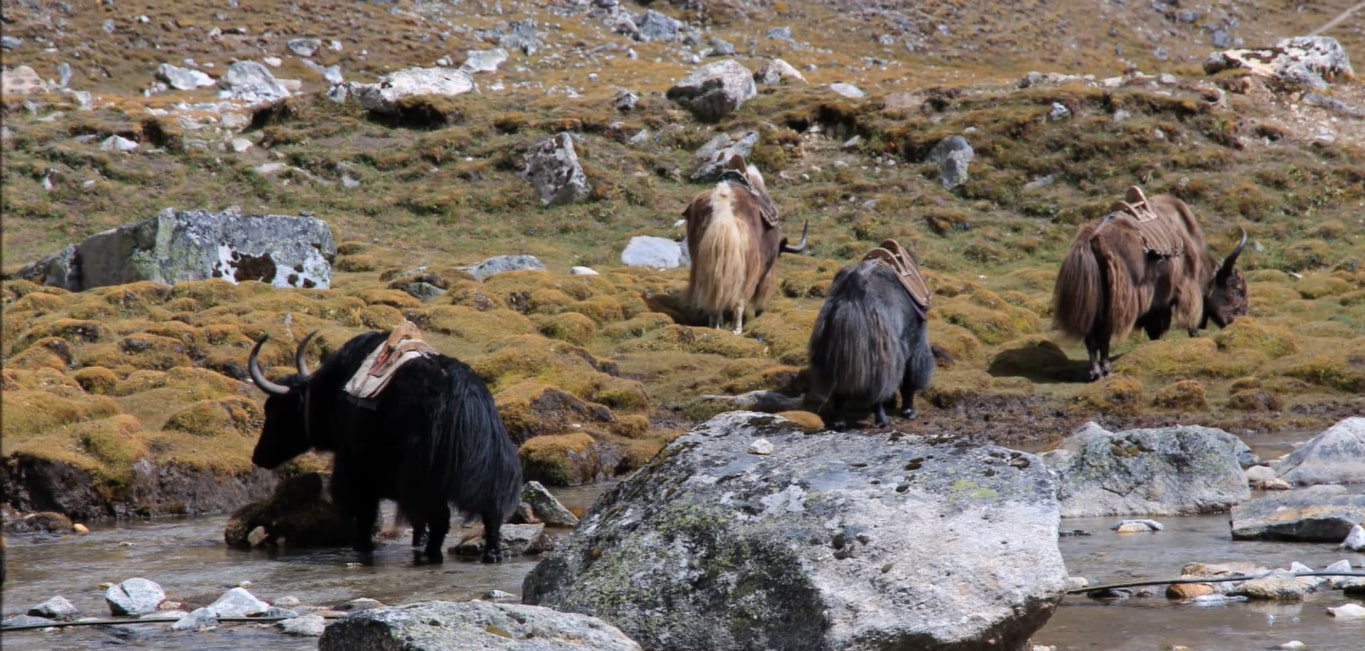
One of the most popular conservation areas in Nepal is Sagarmatha National Park. It is located in the Solu-Khumbu district in the northeastern part of the country. The park is home to Mount Everest, the highest peak in the world, as well as a diverse range of flora and fauna, including blue sheep, musk deer, and snow leopards.
Mount Everest is located in Sagarmatha National Park. It was also declared a world heritage site in 1979. The park is home to a variety of high-altitude flora and fauna. This includes the elusive snow leopard and the red panda.
Chitwan National Park
Another popular conservation area in Nepal is Chitwan National Park, located in the Terai region of Nepal. The larger one-horned rhinoceros lives in the park. It is also popular as the Greater one-horned Rhinoceros.
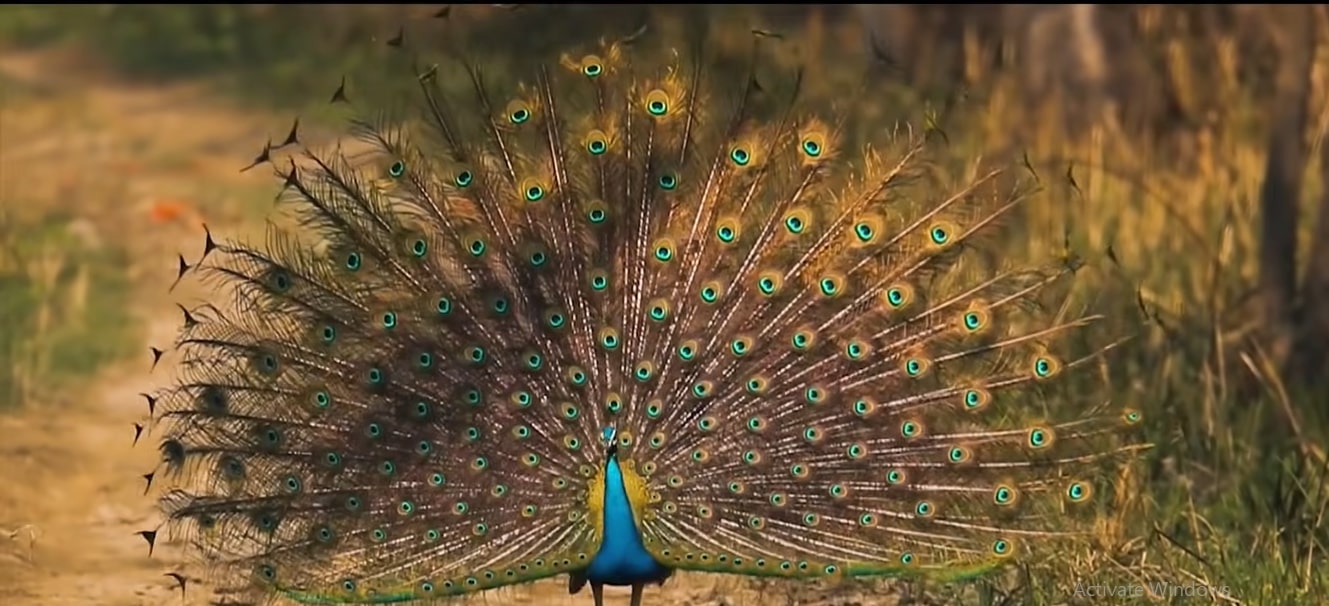
Along with the Royal Bengal Tiger, swamp deer, and more than 500 species of birds. It received the UNESCO World Historic Site designation in 1984. A great variety of plants and animals are in the park. And several indigenous communities that have been living in the area for centuries.
Shuklaphanta National Park
A 305 sq. km. Shuklaphanta National Park is located in southwest Nepal near Mahendranagar City. It is home to endangered species such as the Bengal tiger, rhinoceros, and swamp deer, and other animals including elephants, deer, primates, and over 350 species of birds.
The park also features diverse vegetation, including grasslands, savannas, riverine forests, and wetlands that support aquatic plants and animals. The park is a popular destination for wildlife enthusiasts and nature lovers, and an important area for biodiversity conservation in Nepal.
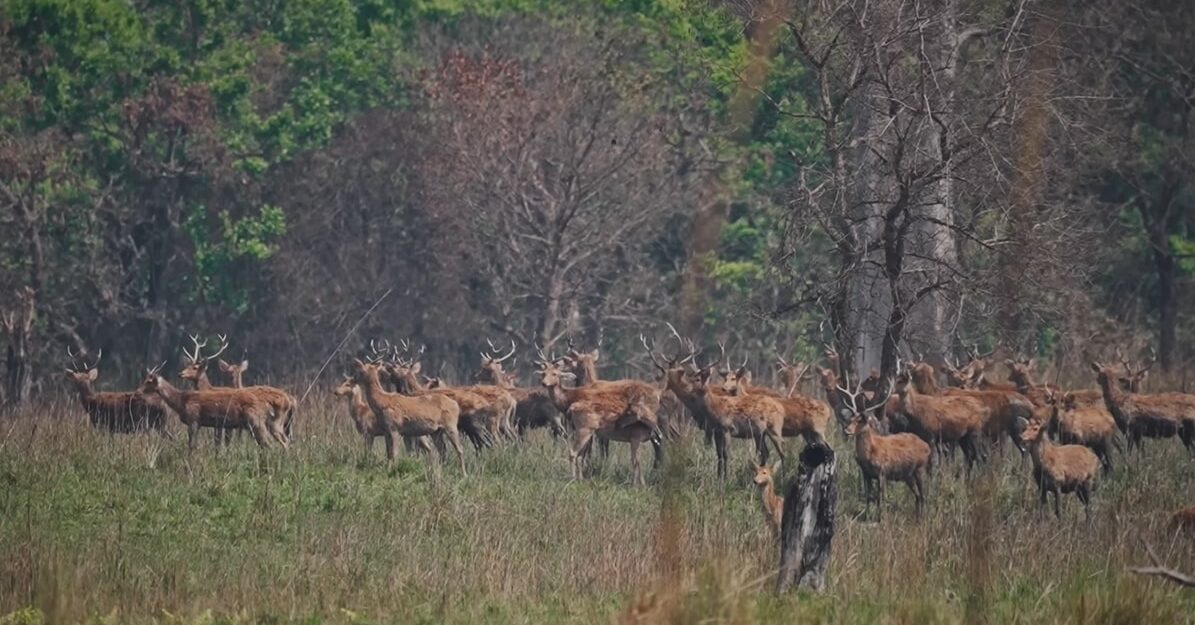
In addition to its protected areas, Nepal is home to several world heritage sites recognized by UNESCO for their natural and cultural significance. There are 12 national parks, 1 wildlife reserve, 1 hunting reserve, and 6 conservation areas in Nepal.
Bardiya National Park
In the southwest of Nepal, there is a stunning and diversified protected region called Bardiya National Park. There are many different types of plants and animals living there, which have a size of 968 square kilometers.
Grasslands, riverine woods, and deep sal trees are features of the park that make it a great habitat for numerous endangered species.
The Bengal tiger, one-horned rhinoceros, Asian elephant, and swamp deer are a few of the most prominent creatures that may be seen in the park. In addition, the park is home to numerous bird species, including the imperiled Bengal florican.
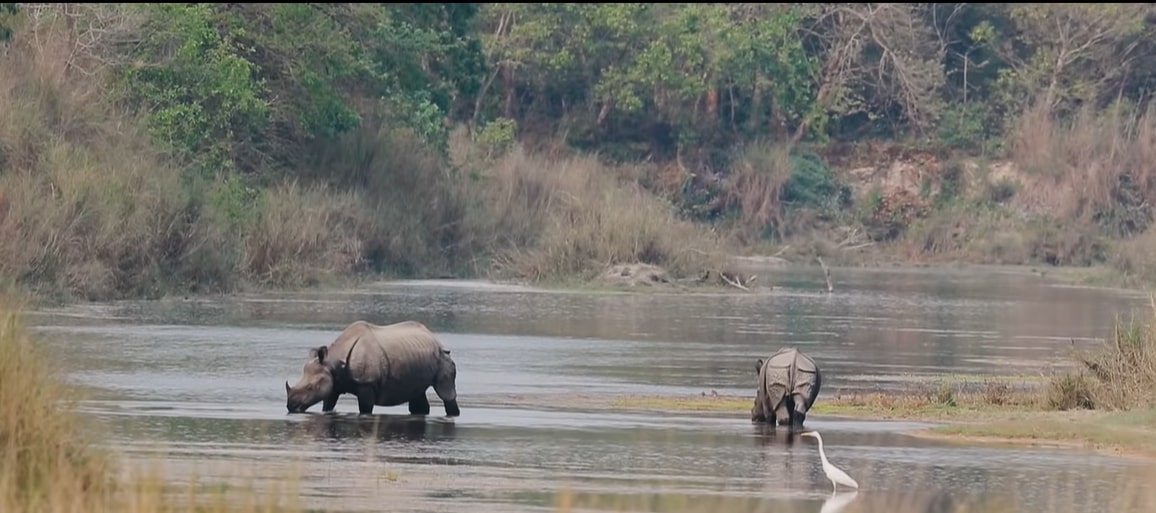
In addition, A variety of activities, including jungle safaris, bird watching, nature walks, and rafting on the Karnali River, are available for park visitors. The park also offers opportunities to learn about the local Tharu culture and lifestyle.
Khaptad National Park
In Nepal’s far western region, there is a stunning protected area called Khaptad National Park. The 225-square-kilometer park is well known for its varied flora and fauna, which includes several endangered species.
Khaptad Baba was a respected Hindu philosopher who spent many years living in the area, and the park bears his name. It is distinguished by its undulating hills, cliffs, and dense rhododendron, oak, and chir pine woods. Additionally, the park is home to a number of significant rivers and streams that serve as major water sources for the nearby communities.
Just a few of the numerous rare and endangered species found in Khaptad National Park include the red panda, musk deer, barking deer, wild boar, and Himalayan black bear. The park is a sanctuary for bird watchers and other wildlife enthusiasts, who may see more than 200 different bird species.
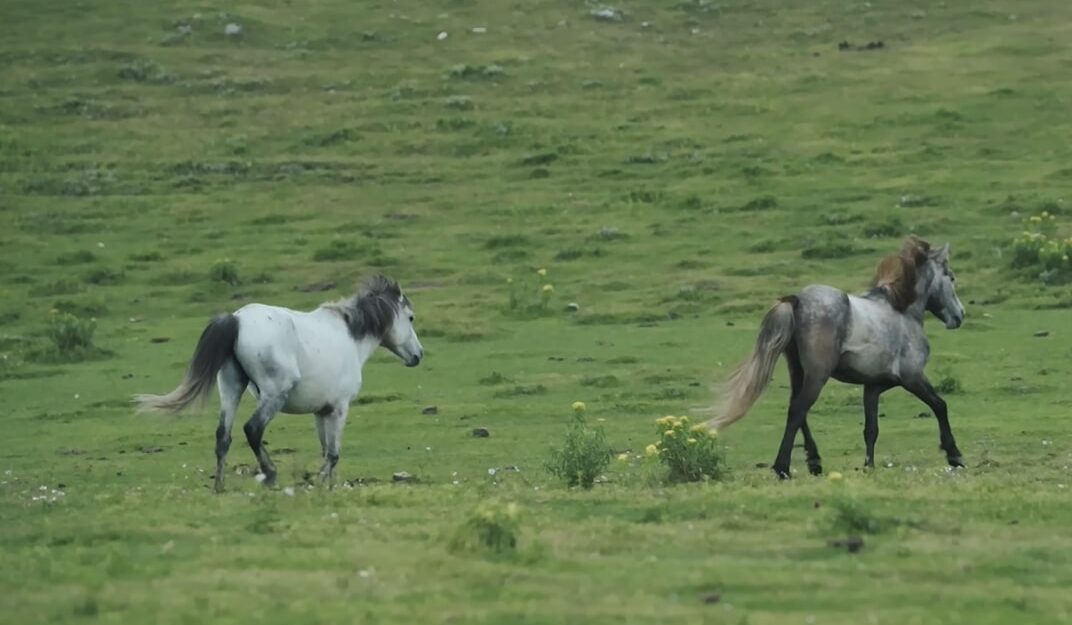
Additionally, there are numerous activities available for park visitors, such as hiking, bird viewing, nature walks, and cultural tours. Moreover, the park is home to a large number of historic temples and shrines that are extremely important to the local populations on both a religious and cultural level.
Iconic Species of Nepal
Nepal is home to a diverse range of iconic species. This includes the Royal Bengal Tiger, Greater one-horned Rhinoceros, Snow Leopard, Red Panda, and Himalayan Tahr.
Spiny Babbler
Spiny Babbler, also known as Kande Bhyakur in Nepali, is a bird species that is endemic to the mid-hills of Nepal. The Spiny Babbler is a small, elusive bird with a distinctive spiky crest on its head. Additionally, the bird is famous for its unique call, which is a combination of a cat’s meow and a pig’s squeal.
Despite its importance, the Spiny Babbler is the least concerned species in Nepal. However, it is an important flagship species for conservation efforts in Nepal and has become a symbol of the country’s rich biodiversity.
Red Panda
The Red Panda is a small mammal found only in the Himalayan region, including Nepal. Moreover, it is famous for its distinctive red and white fur and bushy tail.
Found primarily in the forests of Nepal, the Red Panda is a tree-dwelling mammal. Additionally, the species is popular for its distinctive red fur and is a symbol of good luck in Nepali culture.
Royal Bengal Tiger
The Royal Bengal Tiger is one of the most iconic species in Nepal, found in the Terai region. Moreover, according to estimations, there are around 200 tigers living in Nepal, with the majority residing in Chitwan National Park.
Greater one horned Rhinoceros
The Greater one-horned Rhinoceros is another iconic species of Nepal. In the early 1900s, the species was in danger of going extinct. However, thanks to conservation efforts, its population has rebounded in recent decades.
Snow Leopard
The elusive Snow Leopard is found in the high-altitude regions of Nepal, including Sagarmatha National Park. Remarkably, the species is famous for its thick fur and ability to survive in extreme cold and high altitudes.
Himalayan Tahr
The Himalayan Tahr is a species of wild goat found in the mountainous regions of Nepal. The species is famous for its distinctive curved horns and shaggy coat.
Conservation Efforts in Nepal
The government of Nepal has taken several steps to protect its wildlife and natural resources. Specifically, in 1973, it was approved to create the National Parks and Wildlife Conservation Act, which provided a legal framework for the creation and management of protected areas in the country.
Conservation efforts in Nepal also involve local communities. The government of Nepal works closely with indigenous communities to ensure that their traditional practices and knowledge integrate into conservation efforts.
Local communities are also involved in ecotourism initiatives. It provides a source of income while also promoting conservation.
Challenges to Wildlife Conservation in Nepal
Despite efforts to protect wildlife in Nepal, there are several challenges to conservation efforts. One of the main challenges is habitat loss due to deforestation, human settlement, and infrastructure development.
Habitat loss can lead to fragmentation of habitats and can isolate populations. This reduces the genetic diversity and increases the risk of extinction.
Rhino horns are hunted merely for show-offs because there are absolutely no medicinal benefits of rhino horns. Elephant tusks are used as “status symbols”. They kill animals just to satisfy unnecessary and ridiculous human desires which serve literally no purpose at all.
Poaching and illegal wildlife trade are also major threats to wildlife in Nepal. The demand for wildlife products, such as tiger bones and rhino horns, has led to an increase in poaching activity in Nepal and other countries in the region.
And only a few deaths are by natural causes such as diseases and natural calamities. Climate change is also a significant threat to wildlife in Nepal.
The Himalayan region is particularly vulnerable to the impacts of climate change, such as rising temperatures, changes in precipitation patterns, and melting glaciers.
These impacts can have a cascading effect on ecosystems and can lead to habitat loss and species decline.
Interesting facts about the wildlife of Nepal
Here are some of the interesting facts about the wildlife of Nepal;
- Nepal’s national flower is the rhododendron, and the country is home to over 30 different species of plant.
- The Kali Gandaki Gorge is located in the Annapurna mountain range of Nepal. It is the deepest gorge in the world and provides a unique habitat for several species of birds.
- The country has a significant population of snow leopards, with estimates suggesting that around 300-500 individuals live in the country’s high-altitude regions.
- The country’s grasslands are home to the wild water buffalo, which is an endangered species with only around 4,000 individuals remaining in the world.
- The rare and elusive red panda is found in the Himalayan region of Nepal, and it is a highly endangered species.
- Nepal is one of the few places in the world where you can spot five different species of deer: the swamp deer, chital, sambar, hog deer, and muntjac. Shuklaphanta National Park in Nepal has the largest herd of swamp deer in the world.
- The country’s rivers are home to several species of fish, including the golden mahseer. It is prized by anglers. Gangetic dolphins are found in Karnali Narayani Mahakali, Koshi, and Mohana, and their tributaries.
- The country’s elephant population is primarily in the Terai region. They come into use for transportation and forestry work.
- The country is also famous for its vast array of bird species, with more than 900 different kinds of birds living in the region.
- Nepal is home to some of the world’s most endangered species, including the Bengal tiger, one-horned rhinoceros, and snow leopard.
Conclusion
Nepal boasts of a diverse and vibrant ecosystem, which is home to iconic species such as the Royal Bengal Tiger, Greater one-horned Rhinoceros, Snow Leopard, Red Panda, and Himalayan Tahr.
Additionally, the government of Nepal has taken several steps to protect its natural resources and biodiversity, including the creation of protected areas and engagement with local communities.
However, there are several challenges to conservation efforts, including habitat loss, poaching and illegal wildlife trade, and climate change. Despite these challenges, Nepal remains a leader in wildlife conservation. It protects its natural heritage for future generations.
